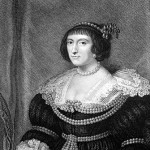The lowest administrative unit of the local government system of the UK is the Civil parish. It comes to function after the district and county administrative units. The parish bestows powers to the Civil parish unit. The rural economy of the ancient feudal system depended on the manorial system which closely linked to the Civil parish administrative unit. The court system of the feudal manor system was replaced by the Civil parish court system, and in medieval times, it was responsible for distributing relief to the poor. The rector of the each parish delegated the, distribution to his monasteries, and it was vested into the parish by the Act for the Relief of the Poor in 1601.
Civil parish reforms
Vestries or parish authorities comprised parish ratepayers. Eventually ratepayers of a parish grew in number and parish found difficulties in gathering this large number for the meeting, and as a result, selected vestries were formed. However, in this manner, the English church or its system exploited parish system after King Henry VIII between the Church of England and the Roman Catholic Church. However, during the reign of Queen Elizabeth I in 1558, the Roman Catholic Church came to the fore. Eventually, the parish lost the power of distributing relief to the poor during the 19th century, and instead, various organisations and boards took that power.
Civil parish the Acts
The Poor Law Amendment Act 1834 resulted in forming a voluntary levying system from 1868 instead of a levy enforced by the parish. In 1894, the Local Government Act brought in the Civil parishes in its present sense. The Act was instrumental in forming urban, rural district vestries and elected Civil parish councils in the countryside. They were said to form in 300 electorates. A group district comprised of many Civil parishes and the boundaries for the Civil parishes were set up to avoid conflict between two Civil parishes. Under the Act, Civil parishes that faced a conflict between other parishes were brought into one parish. The function of the Poor Law System became abolished in 1930, and with that, the use of urban parish system lost its value.
The Present Civil parish
When the Greater London came to exist in 1965, Civil parishes in the City lost their value. It is because the establishment of the Greater London accepted no power lower than a London borough. However, the Local Government Act 1972 did not do away with the Civil parish powers in rural areas and the urban districts. However, the Act abolishes Civil parishes in urban districts and municipal boroughs. However, in 1965 the Act was reformed, and the Civil parish powers became vested into subdivisions of districts. For example, Oxford now has four Civil parishes whereas it had none in 1974 under the Act.
The future trend of the Civil Parish
Today, parish councils exist in areas where there are no parishes. The Local Government and Rating Act in 1997 vested powers in residents areas where there are no parishes to demand to form parish councils. Even the London boroughs came under this clause and again by the Local Government and Public Involvement in Health Act 2007. However, the City of London cannot be included as a part of a Civil parish at present. Parish councils were formed in Daventry, Folkestone, and Brixham in 2003, 2004, and 2007 respectively. Another seven were formed in 2003.









